In a world where flying cars have been a dream since the days of The Jetsons, that dream is rapidly becoming reality. Several companies are actively developing flying cars to ease urban congestion and offer a thrilling, futuristic way to travel. With advancements in battery technology, autonomous systems, and urban air mobility, 2024 has become a critical year for the flying car industry.
Here’s a look at some of the most exciting developments, with updated timelines and insights from industry experts.
PAL-V Liberty Sport
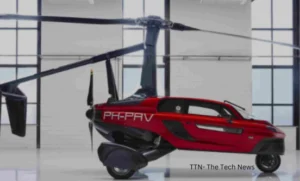
What is it: The PAL-V Liberty Sport, developed by the Netherlands-based PAL-V International, continues to be one of the most anticipated flying cars. It is currently undergoing final testing phases and is scheduled for commercial launch by mid-2024. The PAL-V Liberty Sport operates both as a car and a gyroplane, providing versatility for urban and rural environments.
Features: The PAL-V Liberty Sport transforms from a three-wheeled car into a two-passenger gyroplane in under five minutes. It reaches 0 to 60 mph in less than nine seconds on the road, with a top speed of 100 mph. In the air, it can travel up to 250 miles with two passengers or 310 miles with just the pilot. Its advantage lies in the gyrocopter design, which provides a more stable flight compared to helicopters or VTOL systems. As a result, it’s more fuel-efficient and requires less maintenance.
Read More: The Future Technology of 2050
Expert Insight: According to aerospace engineer Dr. Jeroen Roskam, “The PAL-V’s reliance on gyrocopter technology is a smart choice for urban air mobility. The simplicity of the gyrocopter design, which uses airflow to generate lift, reduces the complexity and cost of vertical flight technologies, making it more feasible for mass production.”
When can you get it: PAL-V International is currently accepting pre-orders, with deliveries expected to start in the second half of 2024. More details can be found on PAL-V’s official site.
Samson Switchblade
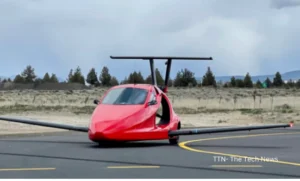
What is it: The Samson Switchblade, developed by Oregon-based Samson Sky, is one of the most versatile flying cars currently in the final stages of its FAA certification process. It’s designed to transition seamlessly between driving and flying modes, making it suitable for users who frequently travel between urban and rural areas. The expected delivery date for customers has now been pushed to early 2025.
Features: The Switchblade is a three-wheeled, two-passenger vehicle that transforms into an aircraft in less than three minutes. Its wings fold into the body when in driving mode. When ready to fly, it can reach an altitude of 13,000 feet and has a cruising speed of 160 mph. Unlike fully VTOL vehicles, the Switchblade requires a short runway for takeoff and landing, but this trade-off allows for greater speed and stability in the air.
Expert Insight: CEO Sam Bousfield stated in a 2023 interview that “the Switchblade is designed with simplicity and owner engagement in mind. By allowing owners to build 51% of their vehicle at our Builder Assist Center, we not only reduce production costs but also give users a deeper understanding of how their flying car operates, making it easier to maintain.”
When can you get it: Samson Sky anticipates starting deliveries in 2025, with production ramping up throughout the year. For more information, visit Samson Sky’s website.
Aska A5
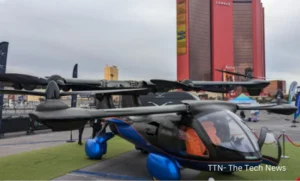
What is it: The Aska A5, developed by the California-based company Aska, is a fully electric flying car with vertical takeoff and landing (VTOL) capabilities. Since its successful test flights in 2023, the A5 has gained significant attention in the urban air mobility sector, positioning itself as one of the most practical solutions for city dwellers. It’s expected to launch commercially by late 2026, with a strong focus on sustainability.
Features: The A5 uses six electric propellers for VTOL, which allows for smooth vertical takeoff and landing, making it ideal for crowded urban areas. It can travel 250 miles on a single charge at speeds of up to 150 mph. Aska’s design also integrates autonomous flight technology, making it one of the few flying cars that could transition into an autonomous air taxi service in the coming years.
Expert Insight: According to Aska CTO Guy Kaplinsky, “The VTOL system in the Aska A5 is designed to minimize noise and maximize efficiency. With urban congestion worsening globally, VTOL vehicles like ours represent the future of air mobility. Our focus is not just on personal ownership but also on fleet deployment for ride-hailing services.”
When can you get it: Aska is targeting a 2026 release for its first consumer-ready vehicles. For updates, visit Aska’s official website.
Klein Vision AirCar
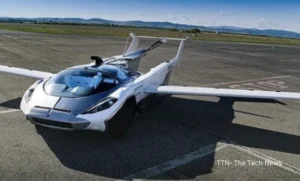
What is it: The Klein Vision AirCar, developed by Slovakia-based Klein Vision, is a roadster that converts into a two-passenger aircraft. It successfully completed its maiden flight in 2021 and received certification from Slovakian authorities in 2022. Klein Vision is now expanding its certifications across Europe, with plans to commercialize the AirCar by late 2024.
Features: The AirCar uses folding wings that allow it to transition between road and air modes in less than three minutes. It is powered by a 1.6-liter BMW engine and can reach a maximum cruising speed of 118 mph in the air. The focus on a hybrid engine gives the AirCar more versatility, though it requires a short airstrip for takeoff and landing. Klein Vision has already announced plans for a four-passenger version and an amphibious model.
Expert Insight: “The AirCar’s design emphasizes performance and style, merging the aesthetics of sports cars with the practicality of aircraft,” said Stefan Klein, the company’s founder. “It’s a vehicle designed for both private use and commercial deployment, with applications ranging from tourism to personal commuting.”
When can you get it: Klein Vision aims to start deliveries by the end of 2024, with pricing expected to range between $500,000 and $1 million. Visit Klein Vision’s website for more details.
Alef Model A
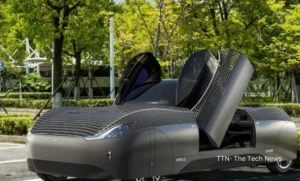
What is it: The Alef Model A is a groundbreaking electric flying car from California-based Alef. It made headlines in 2023 when it became the first flying car to receive special airworthiness certification from the Federal Aviation Administration (FAA). This marks a critical step forward for the development of flying cars in the U.S. The Alef Model A offers both street-legal driving and vertical takeoff capabilities, setting it apart from many competitors.
Features: The Alef Model A has a driving range of 200 miles and a flying range of 110 miles, powered entirely by electric motors. Its unique design features a carbon-fiber body and a mesh-like top, which allows for better airflow during vertical takeoff. The Alef is also equipped with semi-autonomous features for both driving and flying, positioning it as a leading contender in the future air taxi market.
Expert Insight: According to aerospace expert Dr. Harold Williams, “The Alef Model A’s electric propulsion system, combined with its VTOL capabilities, makes it one of the most eco-friendly flying cars in development. Its potential to reduce urban congestion while maintaining a small carbon footprint is significant.”
When can you get it: Alef expects to begin production by early 2025, with pre-orders already being taken. More information can be found on Alef’s website.
Doroni H1
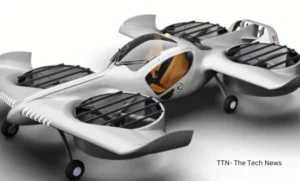
What is it: The Doroni H1, developed by Miami-based Doroni, is an all-electric flying car designed for personal use, with a focus on short-distance travel. The H1 is now in its final certification process with the Federal Aviation Administration (FAA) and is expected to be commercially available in 2024.
Features: The Doroni H1 uses two sets of wings with ducted fans, providing a range of 50 miles and a top speed of 140 mph. It’s designed to be affordable, with pricing targeting around $200,000, making it one of the more accessible flying cars on the market. The vehicle is classified as a Light Sport Aircraft under FAA regulations, meaning anyone with a standard driver’s license and 20 hours of training can operate it.
Expert Insight: Doroni CEO Doron Merdinger said, “Our vision with the H1 is to create a flying car that is easy to operate and affordable for the average consumer. The goal is to make personal air mobility as accessible as owning a luxury car.”
When can you get it: The Doroni H1 is expected to be available for purchase by late 2024. For more details, visit Doroni’s website.
Maverick Flying Car
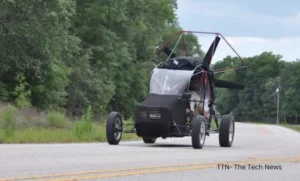
What is it: The Maverick, developed by Florida’s I-TEC Education Center, is a more rugged flying car designed for recreational use and missionary work in remote areas. The Maverick uses a parachute wing system for flight and has been classified as an experimental aircraft by the FAA.
Features: The Maverick’s buggy-like design is powered by a 140-hp engine, allowing it to accelerate from 0 to 60 mph in 3.9 seconds. In flight mode, it uses a parachute-style wing for short takeoff, making it ideal for use in remote or challenging environments. While its performance specifications are modest compared to some other flying cars, it remains highly functional for off-road and humanitarian missions.
Expert Insight: I-TEC founder Steve Saint noted, “The Maverick was built to serve communities that have limited access to infrastructure. Its ability to switch between driving and paragliding flight makes it a valuable tool for missionary work in remote regions.”
When can you get it: The Maverick is already available for purchase, with production continuing into 2024. More information is available on I-TEC’s website.
Conclusion
The flying car industry has made remarkable strides, and 2024 is shaping up to be a pivotal year for this transformative technology. With several flying cars nearing commercial release and key advancements in VTOL capabilities, electric propulsion, and autonomous systems, the dream of flying cars is no longer science fiction but a fast-approaching reality. Models like the PAL-V Liberty Sport and Klein Vision AirCar are expected to hit the market this year, while groundbreaking designs like the Alef Model A and Samson Switchblade are setting the stage for a new era of urban air mobility.
While challenges remain, such as regulatory approvals, infrastructure development, and cost barriers, the momentum is undeniable. The flying car revolution is set to redefine personal and commercial transportation, offering a glimpse into a future where traffic jams may be a thing of the past and air travel becomes part of our daily commute.
Frequently Asked Questions (FAQ)
1. What is a flying car, and how does it work?
A flying car is a hybrid vehicle that can operate both on roads and in the air. These vehicles typically feature wings, rotors, or VTOL (vertical takeoff and landing) systems, allowing them to transition between driving and flying modes. On the road, they function like conventional cars, but when airborne, they rely on advanced propulsion systems to fly.
2. Are flying cars available for purchase in 2024?
Yes, some flying cars are expected to be commercially available in 2024. The PAL-V Liberty Sport and Klein Vision AirCar are two models that are slated for release by the end of this year. Others, like the Samson Switchblade and Doroni H1, are expected to be available in 2025.
3. Do I need a special license to operate a flying car?
Yes, most flying cars will require a special pilot’s license or certification to operate in the air. However, driving them on roads usually requires only a standard driver’s license. Some models, like the Doroni H1, will be classified as Light Sport Aircraft, requiring minimal training compared to traditional aircraft.
4. How much do flying cars cost?
The cost of flying cars varies significantly based on the model and technology. For example, the Klein Vision AirCar is expected to cost between $500,000 and $1 million, while the Doroni H1, designed to be more affordable, may cost around $200,000. Prices may also include additional expenses such as training, maintenance, and insurance.
5. How safe are flying cars?
Flying cars are designed to meet strict aviation safety standards similar to those for small aircraft. Many feature redundant systems, backup power supplies, and advanced navigation technologies to ensure safe operation. However, as with any form of transportation, safety ultimately depends on the operator’s adherence to guidelines and proper training.
6. What is the range of a flying car?
The range of flying cars varies by model. For instance, the PAL-V Liberty Sport can fly up to 310 miles, while the Alef Model A has a flying range of around 110 miles. Some shorter-range models, like the Doroni H1, are designed for urban commutes and can cover distances of about 50 miles.
7. Will flying cars be used for personal or commercial purposes?
Flying cars will be used for both personal and commercial purposes. Initially, they are expected to be adopted by individual consumers, but many companies are also exploring their use in air taxi services, urban commuting, and even for tourism and emergency services.
8. What are the challenges facing the flying car industry?
The flying car industry faces several challenges, including regulatory approvals, infrastructure development (such as vertiports), and high production costs. Additionally, public acceptance, air traffic control integration, and environmental concerns are key factors that need to be addressed before flying cars can become mainstream.
9. How do flying cars take off and land?
Flying cars use various methods for takeoff and landing. Some, like the Aska A5, use VTOL systems, which allow them to take off and land vertically in tight spaces. Others, like the PAL-V Liberty Sport, require a short airstrip for takeoff and landing, similar to small planes.
10. Are flying cars environmentally friendly?
Many flying cars, such as the Alef Model A and Aska A5, are being developed with electric propulsion systems, making them more environmentally friendly than traditional combustion-engine vehicles. However, the overall environmental impact will depend on how these vehicles are used and the energy sources that power them.

